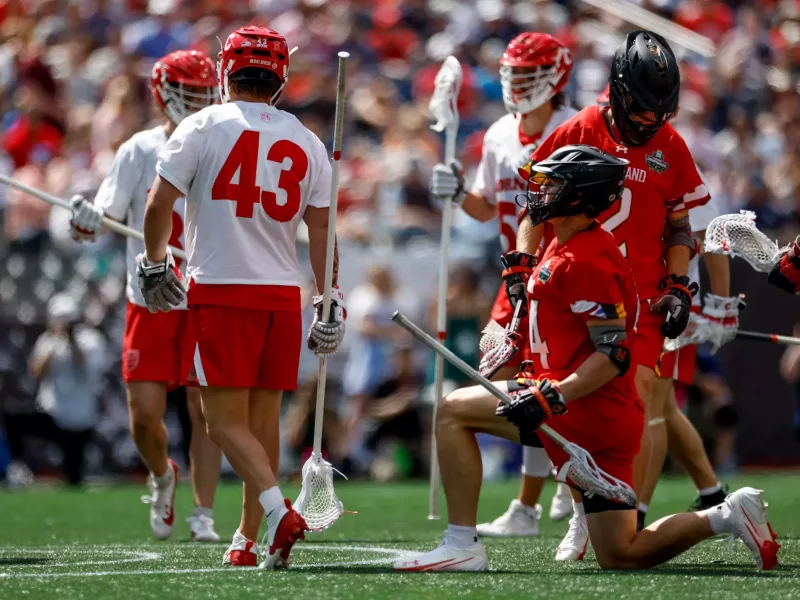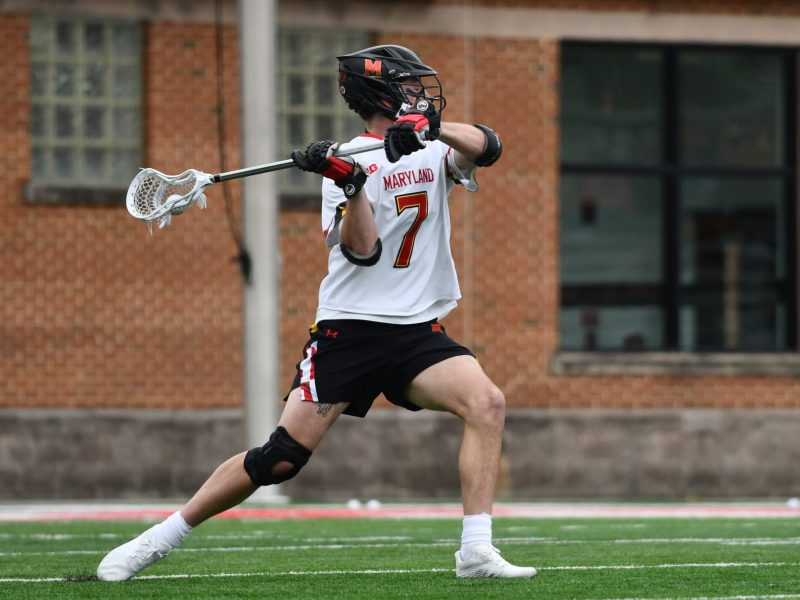Maryland women’s lacrosse’s goalie Emily Sterling knows the risks inherent in stepping in front of shots fired at her. Midfielder Shaylan Ahearn understands that winning a draw control may mean absorbing hits to the head and neck region from other players’ sticks.
The graduate students combat the danger by wearing a Q-Collar. The device, created by Q30 Innovations, offers the pair an extra layer of protection on the field.
The collar, intended to “reduce the risk and severity of traumatic brain injury,” is the only device of its kind cleared by the Food and Drug Administration. It rests on an athlete’s neck and looks like a shirt collar. It has an opening in the front and humps on either side that apply pressure on the neck. The device is popular in sports such as lacrosse, soccer and football, among others.
“It wouldn’t do me any harm,” Sterling said. “Why not wear something else to help protect my body and help protect my brain?”
[Eloise Clevenger’s dual-threat ability has unlocked Maryland women’s lacrosse’s offense]
The brain floats inside of the skull, leaving it more susceptible to movement after bumps. This motion is called “slosh” and occurs during traumatic brain injuries, Ana Navarro Cebrian, a neuroscience lecturer at the University of Maryland, wrote in an email statement to The Diamondback.
When Sterling or Ahearn put on their Q-Collar, it squeezes and begins the process of partial jugular vein compression, which affects blood flow to the skull.
“Pressure to the neck can increase blood flow to the cranium by compressing the jugular vein. If there is enough pressure, that could perhaps also affect the carotid artery,” Navarro Cebrian wrote in an email. “Jugular veins are more superficial than the carotid artery and it is likely that the Q-Collars are only affecting, if anything, the jugular veins.”
The extra blood flow acts as an added layer of protection for the brain, such as a “‘helmet’ within the skull,” Navarro Cebrian wrote in the email. This buffer helps limit the movement — or slosh — of the brain on impact such as a ball hitting Sterling or a stick bashing Ahearn.
[Despite lackluster offense, No. 1 Maryland women’s lacrosse pushes past No. 2 Michigan, 8-6]
Both players heard about the product through a presentation given to the team. Both said they stopped noticing the collar’s presence after a few wears — it’s become part of their everyday lacrosse equipment.
“It’s not uncomfortable, it’s different,” Ahearn said. “You first get a feeling of not like a headrush. But you know it’s working. When they explain the science and then you have the feeling, you’re like ‘Oh, okay, this is the right size, it’s working.’”
The pair also has partnerships with the company. They signed with Q-Collar ahead of last season and partnered with the brand as Q-Collar Teammates after a company offer.
The relationship allows the two standout Terps to endorse the brand on social media platforms and develop connections with those involved at Q30 Innovations. Former Maryland lacrosse players Taylor Cummings and Jesse Bernhardt are now athletic advisors for the company.
“They have great visibility, in terms of being in the NFL, being in the NHL, and lots of other big leagues,” Sterling said. “It’s kind of cool for [Ahearn] and I, as Division I female athletes, to be a part of something that they’re doing on a much larger scale.”




